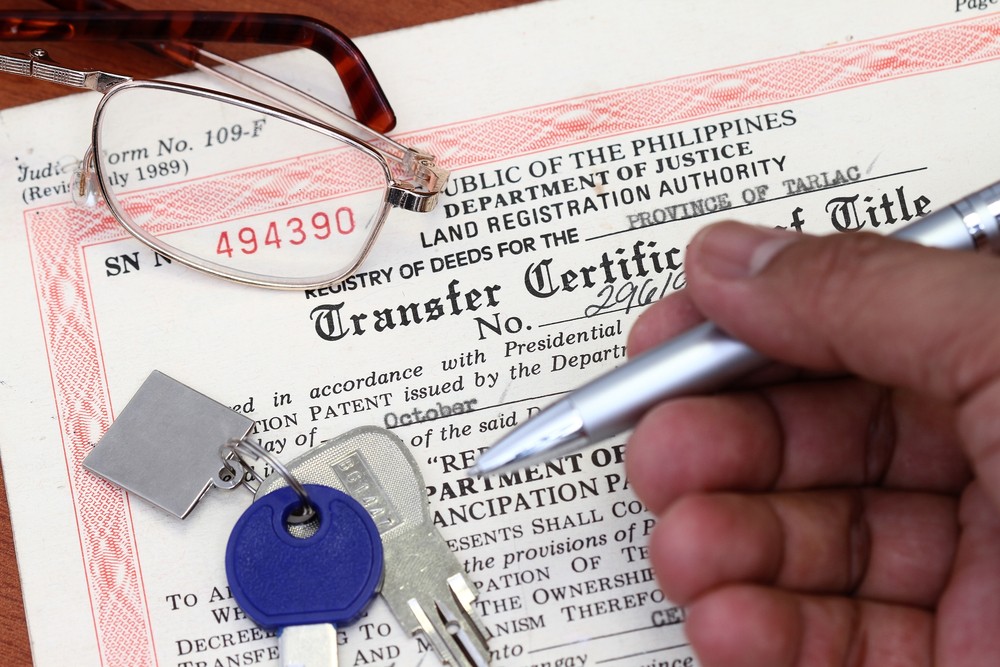
By Brian Figeroux, Esq. | Editorial Credit: Ragma Images / shutterstock.com
A Transfer on Death Deed (TODD) is an estate planning tool that allows real property to pass directly to designated beneficiaries upon the death of the owner, without the need for probate. While TODDs are available in many states, New York currently does not recognize TODDs as a legal instrument. However, understanding the concept of TODDs and exploring its potential benefits can provide valuable insights into estate and tax planning strategies, particularly if future legislative changes were to introduce TODDs in New York.
This analysis will explore the purpose of TODDs in estate planning, their impact on taxes, frequently asked questions, and provide a sample TODD based on existing models in other states that could serve as a guide for what a New York TODD might look like if it were to be legalized.
- What is a Transfer on Death Deed (TODD)?
1.1 Definition and Overview
A Transfer on Death Deed (TODD) is a legal document that allows a property owner to designate one or more beneficiaries who will automatically inherit the property upon the owner’s death, bypassing the probate process. The key feature of a TODD is that it does not transfer any interest in the property during the owner’s lifetime, allowing the owner to retain full control, including the right to sell, mortgage, or revoke the deed without the beneficiaries’ consent.
1.2 Legal Status in New York State
As of now, New York State does not recognize TODDs. Property transfers in New York upon death typically involve probate or other estate planning instruments such as wills, trusts, or joint ownership arrangements. The lack of TODD legislation means that New Yorkers cannot use this specific deed type to manage the transfer of real property upon death. However, understanding TODDs is valuable, especially since estate planning laws evolve, and there may be efforts to introduce similar mechanisms in the future.
1.3 How TODDs Work in States Where They Are Recognized
In states where TODDs are legal, the process is straightforward:
- Creation: The property owner executes a TODD naming one or more beneficiaries.
- Retention of Control: The owner retains all rights and responsibilities over the property, including the right to sell, refinance, or revoke the TODD.
- Death of Owner: Upon the owner’s death, the property automatically transfers to the named beneficiaries without going through probate.
- Recordation: To be effective, the TODD must typically be recorded with the local county recorder’s office before the owner’s death.
- Purpose of TODDs in Estate and Tax Planning
2.1 Avoiding Probate
One of the primary benefits of a TODD is that it allows property to bypass probate, the court-supervised process that often involves time, expense, and public disclosure. Avoiding probate simplifies the transfer of property, reduces legal fees, and speeds up the process of passing assets to beneficiaries.
2.2 Retaining Control During the Owner’s Lifetime
Unlike irrevocable transfers, a TODD does not convey any ownership interest to the beneficiaries while the owner is alive. This feature allows the property owner to maintain full control, including the right to revoke the deed or change beneficiaries without needing consent from the initially named beneficiaries.
2.3 Flexibility and Reversibility
TODDs offer a high degree of flexibility because they are fully revocable. This means the property owner can change their mind about the beneficiaries, or whether the property should pass via TODD, at any time before their death. This is particularly advantageous in estate planning because it allows adjustments in response to changes in family dynamics or financial circumstances.
2.4 Potential Impact on Estate Taxes
While a TODD does not directly impact estate tax liabilities, it helps manage how assets are distributed. By avoiding probate, beneficiaries may receive the property more quickly, potentially reducing costs associated with estate administration. However, it’s important to note that the property transferred via TODD is still considered part of the deceased’s taxable estate and is subject to applicable estate taxes.
2.5 Avoiding Complications of Joint Ownership
Joint ownership with rights of survivorship is another common probate avoidance strategy, but it can introduce complications, such as exposing the property to the creditors of the joint owner. A TODD avoids these risks because it does not create any ownership interest for the beneficiary until the owner’s death.
- Frequently Asked Questions About TODDs
3.1 Are TODDs recognized in New York State?
No, New York State does not currently recognize TODDs. Property transfers upon death in New York must go through probate or use alternative estate planning tools such as living trusts, joint ownership, or life estate deeds.
3.2 Can a TODD be changed or revoked?
In states where TODDs are recognized, they are fully revocable. The property owner can change the named beneficiaries or revoke the TODD entirely without notifying the beneficiaries.
3.3 What happens if the beneficiary dies before the property owner?
If the named beneficiary of a TODD dies before the property owner and no alternate beneficiary is named, the TODD may become void. In such cases, the property would then pass according to the owner’s will or, in the absence of a will, through intestate succession laws.
3.4 Does a TODD protect the property from the owner’s creditors?
No, a TODD does not protect the property from the owner’s creditors. Any debts owed by the owner at the time of death can still be enforced against the property, even after it has transferred to the beneficiary.
3.5 What are the tax implications for beneficiaries of a TODD?
The property transferred through a TODD generally receives a “step-up” in basis, which means the property’s value for tax purposes is adjusted to its market value at the time of the owner’s death. This can reduce the capital gains tax if the beneficiary later sells the property.
3.6 Does a TODD override a will?
Yes, a TODD typically overrides conflicting provisions in a will regarding the transfer of the specific property covered by the deed. However, the TODD does not affect other aspects of the will, such as the distribution of other assets.
Conclusion
A Transfer on Death Deed (TODD) is an effective tool for transferring real property outside of probate, providing estate planning flexibility and maintaining control for the property owner during their lifetime. Although not currently recognized in New York State, the concept of a TODD illustrates valuable strategies for estate planning and tax management. TODDs offer simplicity, the ability to avoid probate, and control over property transfers that other mechanisms might not provide as efficiently. Understanding TODDs can guide New Yorkers in exploring alternative probate-avoidance strategies until potential legislative changes allow the use of TODDs in the state.
For those in New York, consulting with an estate planning attorney is essential to explore the best ways to protect assets and ensure that property passes according to the owner’s wishes, using currently available legal tools.

